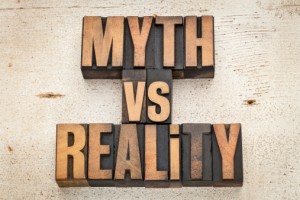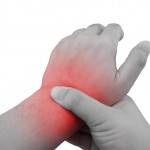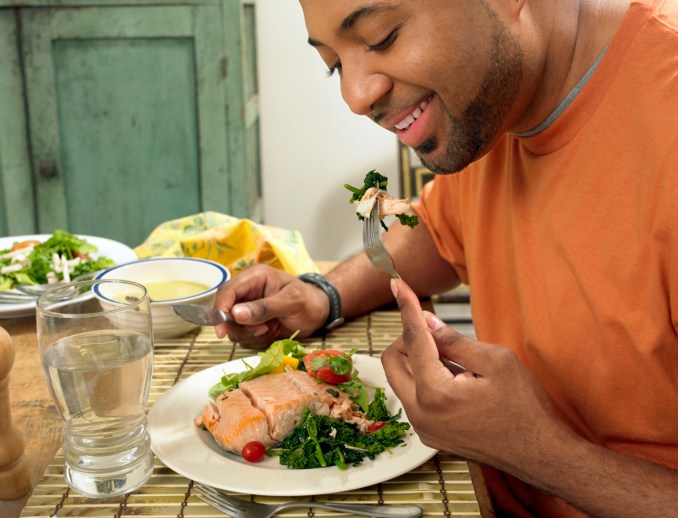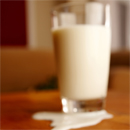Microwaving Kills Food Nutrients? 9 Health Myths Busted
 Stop right there: You’re heading out the door into the cold without a coat? You’ll catch your death – pneumonia! (My mom’s voice still has a piercing echo in my head.) Other familiar warnings for behaviors that will leave you dancing with Dr. Death could be going outside in winter without a hat or – gasp – with wet hair! Or cooking food in the microwave oven; it depletes your dinner of all its nutrients, so you become weak from malnutrition. Could be the fastest route to the coffin, or the urn of ashes.
Stop right there: You’re heading out the door into the cold without a coat? You’ll catch your death – pneumonia! (My mom’s voice still has a piercing echo in my head.) Other familiar warnings for behaviors that will leave you dancing with Dr. Death could be going outside in winter without a hat or – gasp – with wet hair! Or cooking food in the microwave oven; it depletes your dinner of all its nutrients, so you become weak from malnutrition. Could be the fastest route to the coffin, or the urn of ashes.
I’m all for being proactive, and I’m the first to offer my patients advice on diet and exercise to stay healthy. In cold and flu season, those good practices of frequent hand-washing, eating oranges for vitamin C and chicken soup to avoid the sniffles make sense. What I am against, however, is the ridiculous fear-mongering of health myths and propaganda that people truly take to heart.
It’s time to set the record straight.
Here are nine common health myths, busted, to help you navigate through all the bull, and live happy, healthy and fearless of stepping outside your door.
RELATED READING: Common Medical Practices May Be Bad For Your Health
Myth No. 1: Cell Phones Are Harmless
Cell phones are ubiquitous. I get that. Everyone needs to feel connected 24/7. We assume that these devices that we can’t do without are perfectly safe. Multimillion-dollar public relations campaigns and telecommunications industry-funded studies will all confirm that they’re safe. They’re not. The radiation from heavy use can cause brain tumors from holding the mobile to your ear, and prostate cancer in men, from carrying the phone in your front pants pocket. New concerns from current research include the effect of cell phone radiation on our nervous system that leads to unexplained headaches and dizziness, its effect on sperm count and prenatal exposure.
Devra Davis, former White House advisor and an acclaimed epidemiologist and writer has unleashed a flurry of media coverage from her new book, Disconnect, which provides shocking detail about the health risks of cell phones. She says the World Health Organization (WHO) has reviewed the evidence and put cell phone radiation in the same category as the pesticide DDT and engine exhaust. We don’t give those things to children to play with, now do we?
I’m not asking people to stop using cell phones, but use them less frequently and keep your distance; use them in speaker phone mode or with a headset. And don’t buy one for your child.
Myth No. 2: Heart Attack Comes With Significant Pain
In the movies, we’re familiar with the guy grabbing at his chest, keeling over from the pain of a heart attack. Typically men feel a crushing, squeezing pain in their chests. This often comes with shortness of breath, sweating and light-headedness. But women experiencing heart attacks can have very different symptoms that can be far more subtle – and may not include chest pains. Since heart disease is the No. 1 killer of women, it’s important to spot the red flags and take action.
In other words, this health myth is dangerous. Women can experience vague chest discomfort and nausea; other symptoms include sudden weakness and fatigue, body aches or flu-like symptoms. It’s easy for women, then, to chalk up the symptoms to flu or a bad bug.
The main point is, don’t ignore it. If you’re concerned that you may be having a heart attack, call 911 for an ambulance and take an uncoated aspirin; it can help slow the formation of blood clots that can cause heart attacks. Cautionary note: Don’t drive yourself or have someone else drive you to the ER – your heart rhythm can become abnormal or even stop. Medical intervention for a heart attack is most effective during the first two hours, when the risk of death is highest.
RELATED READING: Heartburn Drugs – Can They Break Your Hip?
Myth No. 3: Gluten-Free Foods Are Healthier
Since when has gluten been the food of the devil? Gluten is a protein found in the grains wheat, barley, oats and rye. It’s used to thicken soups and sauces; it gives bread its spongy texture and makes pizza dough stretchy.
The gluten-free craze has spawned a prolific number of new processed products, breads and baked goods without gluten. There are designated gluten-free sections in grocery stores now. But do you need to spend the money on these premium products? And are they better for you?
If you are celiac or gluten sensitive, gluten can be problematic. Digestive symptoms are the most common indicators of gluten intolerance: abdominal pain, bloating, cramping, constipation or diarrhea, weight loss or weight gain. If you’re not sensitive to gluten, your body is technically able to digest it and carry on.
Just because a food doesn’t contain gluten doesn’t mean it’s healthy. Without gluten to hold baked goods together, food manufacturers will often use fats and sugar instead. Those refined starches will only spike insulin levels – and add a puffy layer of padding around your middle.
In fact, going gluten-free can increase your risk of developing a micronutrient deficiency, especially if you rely on processed foods rather than the nutritionally stable and vitamin-packed fresh fruits, vegetables and gluten-free grains like quinoa that you should be eating anyway.
Myth No. 4: Eating Carbohydrates Makes You Fat
Which brings me to the low-carb, no-carb trend. A donut for breakfast isn’t the best choice, but blaming carbohydrates as the cause of obesity doesn’t make any sense either. Like many fad diets, those promoting low-carb eating only deliver results because they restrict your food intake. You burn more calories than you take in, period. So long, trendy Wheat Belly and Paleo. I say, bring back the bread bowl.
There are good carbs (a juicy apple) and empty pointless carbs (a Pop-Tart) that sap your energy and leave you craving more carbs and caffeine to perk you up. It all comes down to striking a healthy balance. You need carbohydrates in your diet because they are the primary source of energy for cells. Some burn quickly for instant energy and others take a while to break down, giving you energy later on. The problem is refined and highly processed carbohydrates can trigger cravings, back to the Pop-Tarts and Jos Louis cakes. A good rule of thumb is to limit the number of carbs you eat in the form of sugar because sugar is low in nutritional value and high in calories. But don’t cut out carbs completely; you don’t want to miss out on healthy foods such as wheat pasta and whole grain breads. A healthy diet is all about variety, shopping the produce aisle, drinking water and limiting processed foods.
RELATED READING: Hands Free Calls And The Effects On The Brain
Myth No. 5: There’s No Need For Sunscreen In The Winter
Hot sun and sunscreen go hand-in-hand in the summer. Most of us have been well-versed in the risk of skin cancer and the need to protect our skin from the sun’s harmful rays. Sunglasses, sunhats and specially formulated sun-protection clothing are top-sellers in bathing suit weather. But the truth is, we need to use sunscreen year-round, not just for the tropical days. The Earth’s surface is closer to the sun during the winter months, so we are exposed to more harmful rays without even realizing it. The colder air and gloomy days have us concerned about staving off the chill with scarves, hats and layers, so we’re distracted from sun rays.
The Skin Cancer Foundation says when it comes to snow and ice, both can reflect up to 80 percent of harmful UV rays so that they can hit the skin twice. Double trouble! It might surprise you to know that skin cancer is the most common form of cancer in the United States. Each year, there are more new cases of skin cancer than the combined incidence of cancers of the breast, prostate, lung and colon.
And don’t save those sunglasses for the beach. Protect your eyes with a good pair of sunglasses every day. Macular degeneration is the leading cause of blindness in North America.
Myth No. 6: Microwaving Kills The Nutrients In Your Food
While foodies may not admit to it, we all love the convenience of a microwave oven. We pop our leftovers in the microwave and – zap – they’re hot in minutes. Coffee a little cold? Nuke it! The microwave oven uses electromagnetic radiation; this rotates the food molecules to generate thermal energy to cook or heat the food. The problem is, microwaving heats most foods unevenly and creates a disappointing, soggy texture. I’m sure Nigella Lawson wouldn’t approve (but uses her own discreetly when she’s off-air). Chicken wings in the microwave? Don’t go there.
But does the process actually rob foods of their nutrients? Crazy talk! Not any more than other cooking methods. Microwaving can kill sulforaphane from broccoli, for example, but cooking broccoli in any way can kill sulforaphane or slow its absorption into the body.
Food scientists recommend that the best cooking methods for retaining nutrients are ones that cook quickly. You want to expose food to the heat for the smallest amount of time and use only a minimal amount of liquid. That’s good microwaving! Use a small amount of water to essentially steam food from the inside, and you’ll retain more vitamins and minerals than with almost any other cooking method. So if your food is covered tightly in a microwave-safe container, with minimal liquid, you have a nutritional win.
RELATED READING: 3 Toxic Foods You Would Never Suspect
Myth No. 7:Stress Causes Ulcers
Stress has a myriad of negative effects, including outbursts of office rage and mild depression. It can create havoc with your immune system, too, leaving you vulnerable to catching a bug. But it does not cause ulcers, those painful sores in the stomach lining. Old-school thinking pegged ulcers as the result of too much stress or spicy food, or both. Research now says the culprit is Helicobacter pylori (H. pylori), a spiral-shaped bacterium that causes more than 90 percent of ulcers. It weakens the protective mucus coating of the stomach and duodenum, the first part of the small intestine, allowing acid to get through to damage the sensitive lining underneath.
So how do you get an ulcer? H. pylori is spread from person-to-person contact, either through saliva, vomit or fecal matter that comes into contact with hands, food or water.
Some people who have used nonsteroidal anti-inflammatory drugs (NSAIDS), such as aspirin or ibuprofen, for a long time are also prone to developing ulcers. Less commonly, ulcers are caused by cancerous tumours in the stomach or pancreas.
Myth No. 8: Drinking Alcohol Warms You Up. Good For Those Cold, Cold Days
When the blustery cold hits, you crave hot liquids – comforting soup, hot chocolate and, when the hour is right, a hot beverage spiked with alcohol to really make you feel warm and toasty! If a Hot Toddy isn’t available, going for a bottle of wine or the hard liquor will ward off the chills. Not so: Alcohol dehydrates the body and makes you feel warm because it causes your blood to rush toward your skin (red nose and cheeks sound familiar?) and away from your internal organs. Your core body temperature actually drops with alcohol consumption, so it’s a roadblock to your body’s ability to shiver and create extra heat.
With the detrimental affects of alcohol and the prevalence of alcohol addiction, this health myth certainly hits a nerve.
What you should know is there are foods that will warm you up from the inside. They’re called thermogenic foods, causing a biochemical reaction to increase internal body temperature. Certain spices do the trick: ginger root, cayenne pepper, chili peppers, turmeric, nutmeg, cumin and fennel – work these into your soups and stir-fries. Brown rice, quinoa and coconut oil are also on the list. Another reason to get into the kitchen and do some cooking to make the most of winter.
Myth No. 9: You Lose Most Of Your Body Heat Through Your Head. Mom Always Says!
While a hat helps keep you warm and protect you from the sun’s harmful rays, you won’t turn into a popsicle when you venture outdoors on a cold day without one. Most of your body heat does not escape through your head. This popular myth comes from a U.S. Army study in the 1950s where volunteers visited the Arctic with their heads exposed, while the rest of their bodies were well-protected by proper gear. Yes, they lost most of their body heat from their heads.
If you go outside without gloves, you’ll lose more heat through your hands. If a body part is exposed, that’s where you’ll lose more heat.
Now that I’ve had my two cents on these health myths, I can rest a little easier. Information comes at us so much more quickly these days – and there’s so much of it – that it’s easy to get overwhelmed and caught up in the hype. So forgo the online self-diagnosis and symptom monitoring! If you have health concerns, see your doctor. Let them have their say and walk away with the truth.
-
Diet Pills- Your weight Loss support
From time immemorial, man has always wanted to look good. However,
-
I Really Need to Lose Weight - These Helpful Advices Are For You
People who are dying to lose weight are often quoted as saying, &ld
-
How to Get Rid of My Fat Face
The face is the part of the body that most people like to look at most
-
What it Really Takes to Get the Body You’ve Always Wanted
Working as a personal trainer in fitness industry for many years I&
-
Do Low Carb Diets Work?
They do work, but from my experience and
-
Fat Burning Exercise Equipment Secrets
There are lots of information spreading
- DON'T MISS
- Weight Loss Plans - Rapid Weight Loss Plans
- 10 Strategies Your Clients Must Use to be Successful as a Personal Trainer
- 7 Non-Stressful Weight Loss Methods
- 10 Secrets for Weight Loss
- EAT CARBS Without Gaining Weight
- 3 Myths That Keep You Overeating
- The Mental Game Of Weight Loss
- Gastric Bypass Surgery Will Change The Way You Think
- Tulips For Jessica Simpson
- You Got To Take It Higher (Benefits Of Increasing Your Metabolism)




